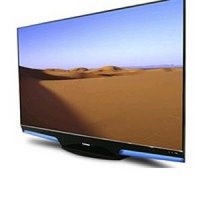This Is Not Your Grandfather's TV
 I remember the first time I went to a Laserium show, thinking: "lasers can do a lot more than I thought." Now an Australian company has developed laser television that surpasses plasma tv technology in just about any way you can imagine.
I remember the first time I went to a Laserium show, thinking: "lasers can do a lot more than I thought." Now an Australian company has developed laser television that surpasses plasma tv technology in just about any way you can imagine.Soon-to-be-listed Australian company Arasor International and its US partner Novalux yesterday unveiled what they claimed to be the world's first laser television in Sydney, with a pitch that it will be half the price, twice as good, and use a quarter of the electricity of conventional plasma and LCD TVs.Source.
Manufacturing company Arasor produces the unique optoelectronic chip central to the laser projection device being developed by Silicon Valley-based Novalux, which is being used by a number of television manufacturers.
And displayed beside a conventional 50 inch plasma TV, the Mitsubishi-built prototype does appear brighter and clearer than its "older" rival.
With a worldwide launch date scheduled for Christmas 2007, under recognisable brands like Mitsubishi and Samsung, Novalux chief executive Jean-Michel Pelaprat is so bold as to predict the death of plasma.
"If you look at any screen today, the colour content is roughly about 30-35 per cent of what the eye can see," he said.
"But for the very first time with a laser TV we'll be able to see 90 per cent of what the eye can see.
"All of a sudden what you see is a lifelike image on display."
With better energy efficiency, better price and half the weight and depth of plasma TVS, laser televisions are expected to take over the plasma niche.
I never did like the power-hog plasma sets. But if lasers can provide over 50% more colour content than plasma, I cannot wait to see the new laser displays. Next stop--laser hologram displays.

2 Comments:
Yes, indeed, a ceiling mounted laser holograph device projecting a 3-D image in the middle of the room would be the cat's meow. Imagine a football game that you could see from any angle. It would change the way directors direct and editors edit and set-designers design when producing traditional films. In a sense it would change everything about TV and movies if one was to squeeze all the potential out of holography.
Holographic projectors would be good for home theatres, but for mobile computing I think the 3-D goggle display would be nice.
Post a Comment
“During times of universal deceit, telling the truth becomes a revolutionary act” _George Orwell
<< Home